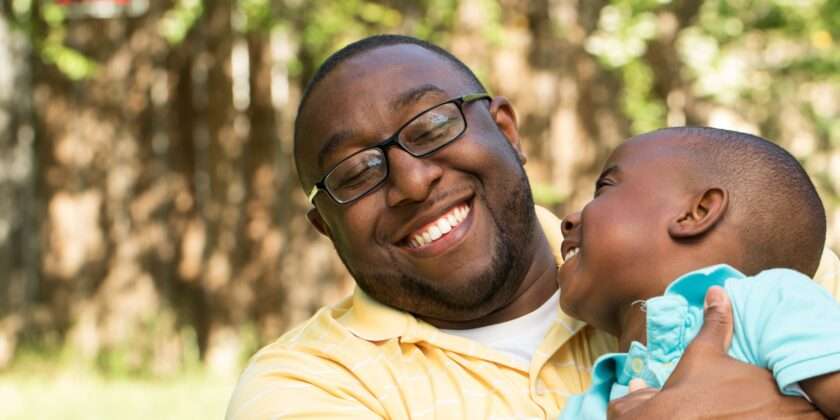“I speak of a clinical depression that is the background of your entire life, a background of anguish and anxiety, a sense that nothing goes well, that pleasure is unavailable and all your strategies collapse.” These words by Leonard Cohen applies to African American Men today. Black men do have mental health issues, but White men suffer even more mental health problems in the United States. Here’re some key findings from the Centers for Disease Control and Prevention’s (CDC) National Health Interview Survey( 2010–2013):
- Nearly 9% of men (8.5%) had daily feelings of anxiety or depression. Less than one-half of them (41.0%) took medication for these feelings or had recently talked to a mental health professional.
- Racial and ethnic differences were observed only for men aged 18–44.
- Among men aged 18–44, non-Hispanic black and Hispanic men (6.1%) were less likely than non-Hispanic white men (8.5%) to report daily feelings of anxiety or depression.
- Among men aged 18–44 who had daily feelings of anxiety or depression, non-Hispanic black and Hispanic men (26.4%) were less likely than non-Hispanic white men (45.4%) to have used mental health treatments.
- The significant racial and ethnic disparity in treatment utilization was associated with lack of health insurance coverage.
Compared with white Americans, persons of other races in the United States are less likely to have access to and receive needed mental health care (Ref#1–4). Few studies, however, have explored such disparities specifically among men. Mental health and treatment have traditionally received less attention for men than women, perhaps because men are less likely than females to report mental health problems and to receive services for these problems (Ref# 4–7). This report uses nationally representative data on the frequency of mental health symptoms and related treatment utilization to compare men of color (that is, non-Hispanic black and Hispanic men) with non-Hispanic white men. It also explores whether racial and ethnic disparities differ by age, health insurance coverage status, and income.
Among all men aged 18 and over, 7.7% had daily feelings of anxiety, 3.5% had a daily sense of depression, and 8.5% felt either anxious or depressed every day. However, non-Hispanic black and Hispanic men (7.3%) were significantly less likely than non-Hispanic white men (9.0%) to feel anxious or depressed every day.
Racial and ethnic differences in daily feelings of anxiety or depression were observed only for men aged 18–44.
Men aged 18–44 (7.6%) were significantly less likely than men aged 45 and over (9.4%) to have daily feelings of anxiety or depression. This difference was due primarily to racial and ethnic differences in the younger age group. Among those aged 18–44, non-Hispanic black and Hispanic men (6.1%) were nearly 30% less likely than non-Hispanic white men (8.5%) to have daily feelings of anxiety or depression. Among men aged 45 and over, there were no racial or ethnic differences in the prevalence of men with daily feelings of anxiety or depression.
Among men aged 18–44, racial and ethnic differences in the use of mental health treatments were significantly greater for men without health insurance coverage than for men with health insurance.
Among uninsured men aged 18–44 with daily feelings of anxiety or depression, non-Hispanic white men (39.3%) were three times as likely as non-Hispanic black and Hispanic men (12.7%) to have used mental health treatments. This disparity was significantly smaller for men aged 18–44 who had health insurance coverage. In fact, among insured men aged 18–44 with daily feelings of anxiety or depression, no statistical difference was observed between the racial and ethnic groups in the use of mental health treatments.

White men were 1.7 to 2.0 times as likely as non-Hispanic black men to have taken medication or talked to a mental health professional.
In contrast, racial and ethnic disparities in use of mental health treatments were observed regardless of family income. Among men aged 18–44 who felt anxious and depressed every day, non-Hispanic white men were 1.7 to 2.0 times as likely as non-Hispanic black and Hispanic men to have taken medication or talked to a mental health professional.
Summary
Non-Hispanic black and Hispanic men were less likely than non-Hispanic white men to report having daily feelings of anxiety or depression, and this disparity was due to significant differences among younger men aged 18–44. This finding may seem to contradict other research revealing that rates of severe psychological distress (Ref. 6) and depressive symptoms (Ref. 7) are higher among Hispanic and non-Hispanic black persons than among non-Hispanic white persons. However, the findings in this report are based on a different measure of mental health symptoms (reported daily feelings) that considers frequency but not the intensity of feelings. The findings in this report are also based on a different population (men only).
Younger men of color who reported daily feelings of anxiety or depression were less likely than their non-Hispanic white peers to take medication or talk to a mental health professional. This difference in treatment use was not observed for older men. Among the younger men, the racial and ethnic difference in treatment use was found regardless of income.
Racial and ethnic differences in men’s mental health treatment use appear to be driven by differences among younger uninsured men. The survey data cannot be used to determine if young men of color without health insurance, relative to young uninsured non-Hispanic white men, perceive less need for treatment, are less motivated to seek treatment, experience additional non-cost barriers when attempting to access mental health treatments, or more quickly stop using treatments that do not seem to be working. In focus groups, young men of color are especially likely to say that mental illness and treatment seeking are signs of weakness and can bring shame and embarrassment to one’s self and family (Ref. 8). Having health insurance coverage appeared to reduce the impact of such barriers; the observed racial and ethnic difference in treatment use was significantly smaller for younger insured men. Recent expansions of health insurance coverage may consequently reduce these racial and ethnic disparities.
Jay Harold has a Healthcare Resource Page that has links to mental health organizations. The information is included in the free Health and Wealth information to improve your life.
Play the free “Slow Roll Through Civil Rights” Game found on the Jay Harold website. Enjoyed this post? Share it and read more here. Questions? “Ask the Pharmacist a Question!”
References
- Alegría M, Chatterji P, Wells K, Cao Z, Chen CN, Takeuchi D, et al. Disparity in depression treatment among racial and ethnic minority populations in the United States. Psychiatr Serv 59(11):1264–72. 2008.
- Broman CL. Race differences in the receipt of mental health services among young adults. Psychol Serv 9(1):38–48. 2012.
- HHS. Mental health: Culture, race, and ethnicity—A supplement to mental health: A report of the Surgeon General. Washington, DC. 2001.
- HHS. Mental health: A report of the Surgeon General. Washington, DC. 1999.
- Kessler RC, Berglund P, Demler O, Jin R, Merikangas KR, Walters EE. Lifetime prevalence and age-of-onset distributions of DSM-IV disorders in the National Comorbidity Survey Replication. Arch Gen Psychiatry 62(6):593–602. 2005.
- Weissman J, Pratt LA, Miller EA, Parker JD. Serious psychological distress among adults: United States, 2009–2013. NCHS data brief, no 203. Hyattsville, MD: National Center for Health Statistics. 2015.
- Pratt LA, Brody DJ. Depression in the U.S. household population, 2009–2012. NCHS data brief, no 172. Hyattsville, MD: National Center for Health Statistics. 2014.
- Thompson VLS, Bazile A, Akbar M. African Americans’ perceptions of psychotherapy and psychotherapists. Professional psychology: Research and practice 35(1):19–26. 2004.
- Parsons VL, Moriarity C, Jonas K, et al. Design and estimation for the National Health Interview Survey, 2006–2015. National Center for Health Statistics. Vital Health Stat 2(165). 2014.




